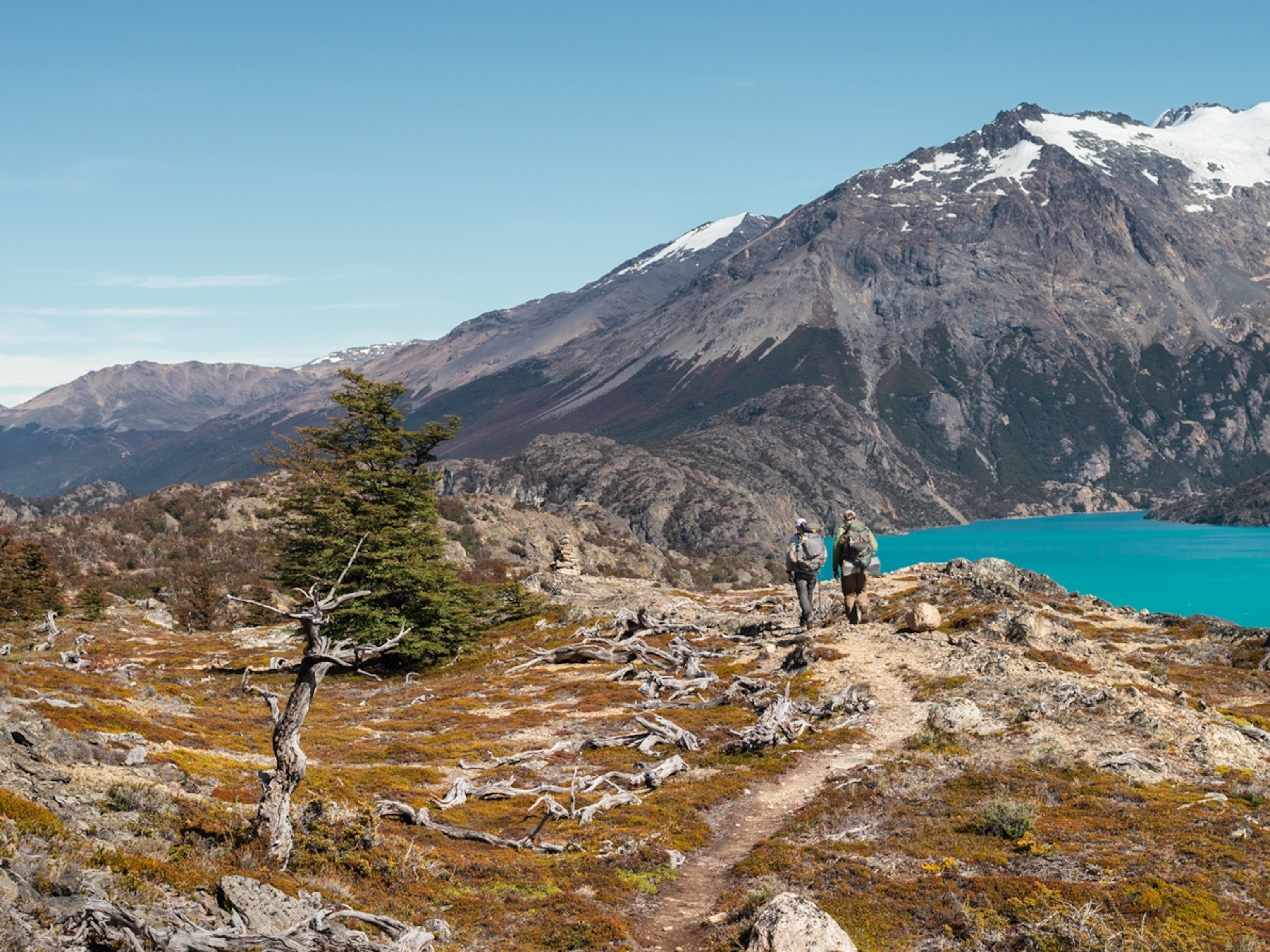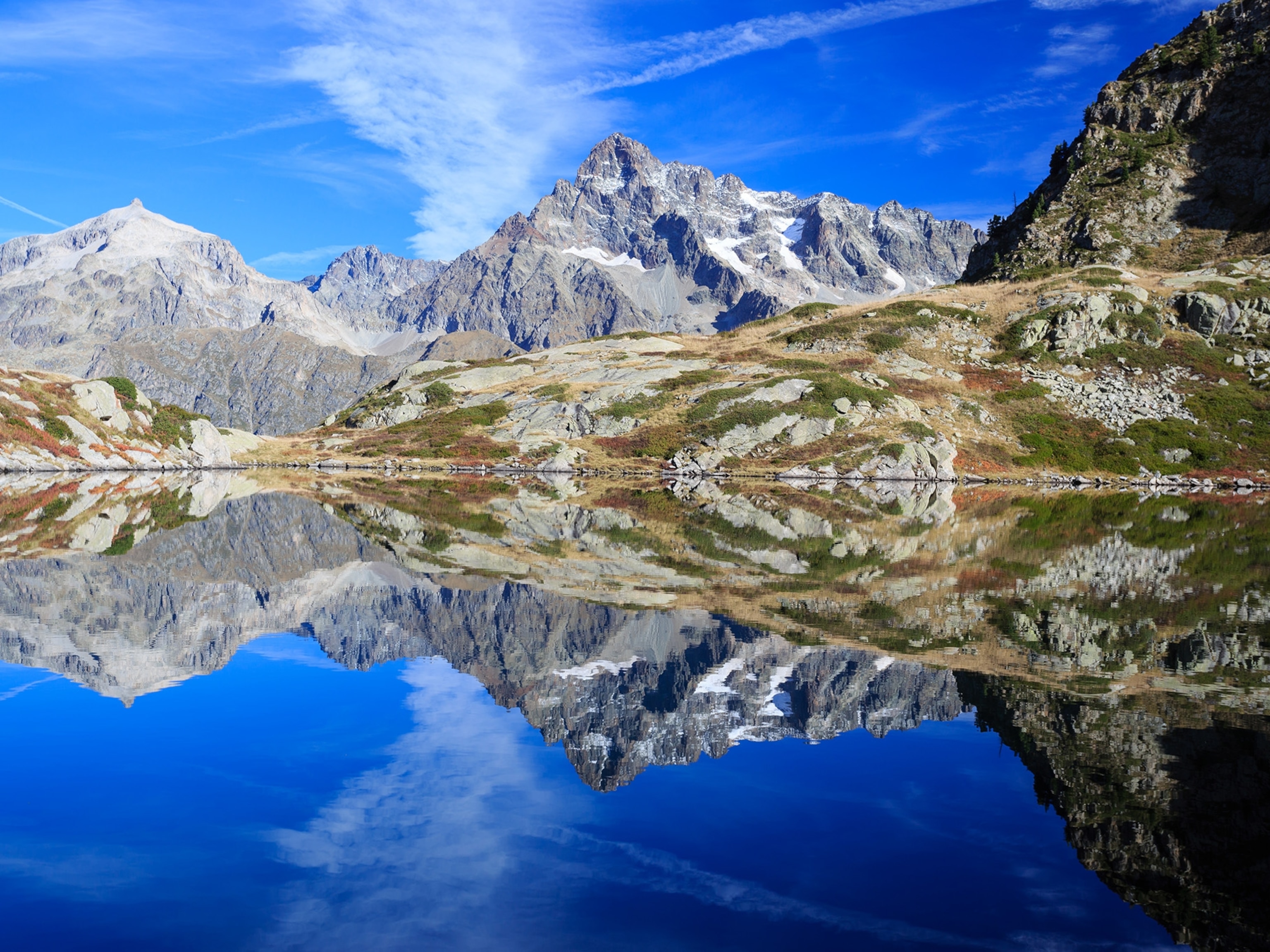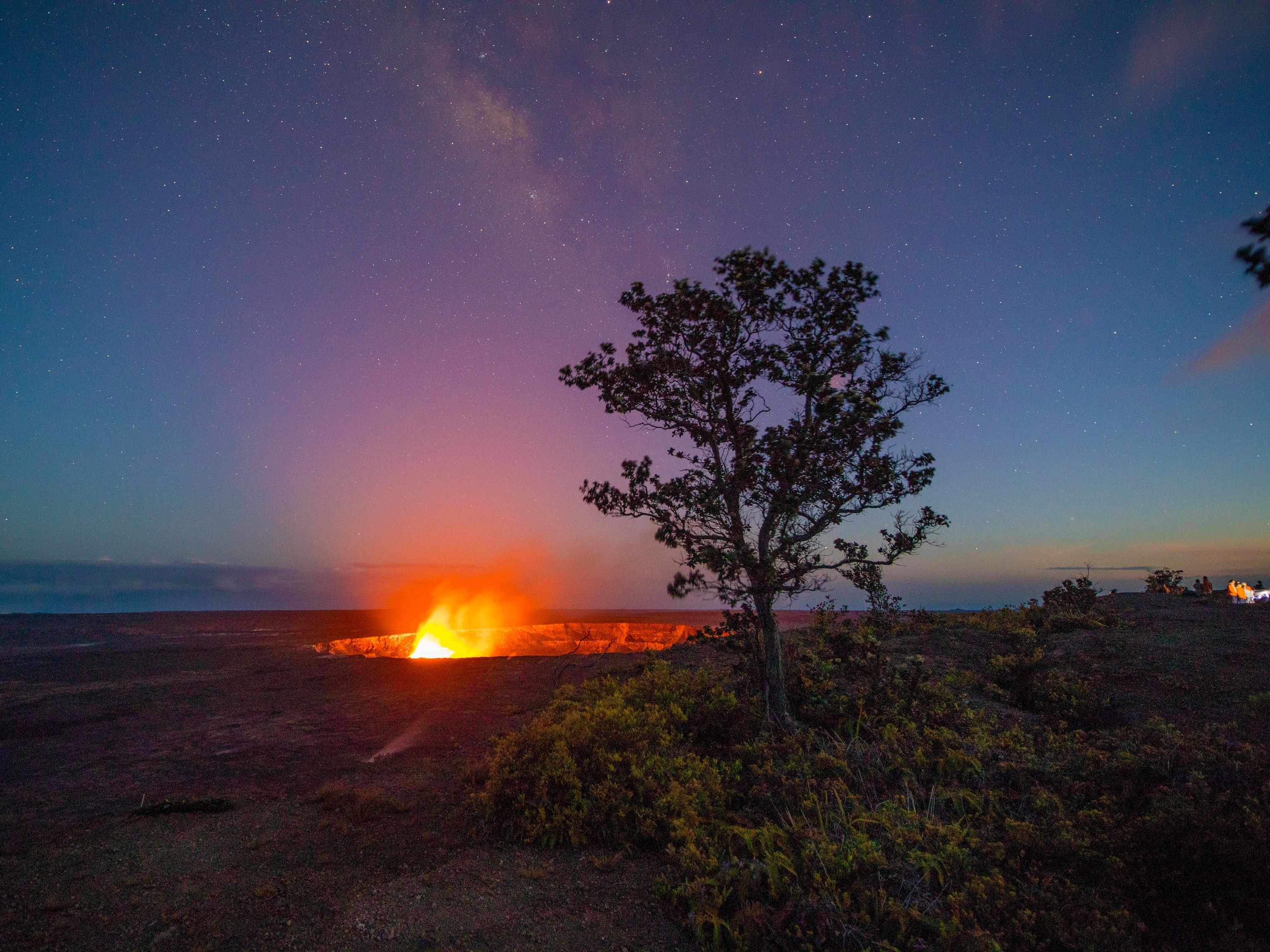
Following the Grand Canyon’s Tracks Through Time
Mountain lions, deer, and wild sheep blaze a trail for photographer Pete McBride and author Kevin Fedarko on their sectional thru-hike of the Grand Canyon’s desert landscape.
Sometime around 4 p.m., as an auburn light stretches shadows across the canyon, I stop walking, certain that someone or something is watching me. I scan the sandstone rib on the alcove ahead of me—nothing. At least nothing I can see. But some ancient, long-forgotten survival sense, more attuned now after 40 days of hiking some 500 miles (805 kilometers) across the Grand Canyon’s desert landscape, is telling me something is eyeing me.
That something, at least in my mind or my ancient survival sense, is a mountain lion—a large one. The feeling is aided by the fact that we’ve been shadowing the enormous tracks of a mountain lion for days. Thoughts of becoming lunch aside, I’m actually thrilled when I locate another paw track, because this canyon resident seems to know the way through the ribbons of rock ledges and cliffs of the ochre-tinted esplanade layer when there is no other trail or marker to follow. And the last thing we need is to get lost out here or pinned on a 2,000-foot (610-meter) wall in the redwall formation.
So every time we cross the scores of drainages and can’t see an obvious exit, this lion, whose tracks seem to be quite fresh with crisp edges, shows us the way.
At times I wonder if he or she is a totem—our spirit animal—lending us a paw.
But for some reason, after four days of shadowing this kitty’s trail, I’m suddenly picking up the vibe that our feline friend or totem is no longer guiding, but rather stalking us.

Over the course of last year, author Kevin Fedarko and I have walked roughly 650 miles (1,046 kilometers) through the heart of the Grand Canyon, off-trail between the river and rim—as a way to understand this iconic landscape and crown jewel of the National Park System, which celebrates its hundredth birthday this year.
This slightly masochistic, rather insane quest was a logistical gymnastics feat and a physical beat down, but ultimately, it was an excuse to take a unique, profound approach to understanding what is at risk of changing or being lost if a flood of development—including a proposed tram, a two-million-square-foot (609,600-square-meter) megaresort on the rim, ongoing uranium mining, and a booming Las Vegas air tour industry—moves forward with their plans in and around the canyon and the park itself. All of the projects increase the pressure between access, economics, resource extraction, and, of course, maintaining the park’s beauty and silence. Like the canyon itself, the answers and solutions are not always as black and white as we would like.
When Kevin and I weren’t hiking, we were exploring the complexities of these challenges. Long hours on the invisible trail enabled exhaustive discussions, but often, what consumed our dialogue and energy most frequently was the trail itself, or more accurately, the lack thereof.

For centuries, ancient Puebloans traveled through the canyon but only south to north and vice versa. In other words, from lowland to highland. There was little reason to travel downstream. I guess no one was dumb enough.
So, remarkably, there are no trails for roughly 70 percent of the canyon parallel to the river. If you are on the north side, that figure leaps to 90 percent.
Yet there are a few helpful friends that do travel down and upstream. The most common are the wild sheep, and they were our key to finding lines through the bright angel shale, Muav limestone, and the redwall layers of cliff and crevasses that otherwise looked impassable. If we could find sheep droppings, which we referred to as “black nuggets of gold,” we knew we were set. At the least, we knew an agile-footed, four-legged, canyon-born sheep made it through this overhanging, stomach-dropping ledge (without a pack, of course).
At times, the thin ribbons of rock they led us through confounded my mind and rattled my nerves. But with time, the sheep became known to us as the “trail builders’ union.” Naturally, some sheep unions were better than others. It appears they go on strike a lot in Marble Canyon.
In other stretches of the park, atop the esplanade layer, we found elk, deer, and coyote tracks, plus the odd hoof prints of wild mustangs who had come off the rim of Havasupai Reservation and now called the national park home. They were hard to follow, and amazingly hard to see (we eyed six), but their tracks often led us to water.
On the Tonto layer, one ribbon of rock and time below the esplanade, we found the dusty, well-worn network of tracks and trails created by wild burros left behind by miners. The park service attempted to relocate them, but clearly, a few refused to leave their rock abode. They appeared prominently in drainages east of the Havasu Creek.
To the northwest, in what is known as the Godscape or Western Grand Canyon, the tracks of deer, lynx, and the occasional rattlesnake appeared. We saw few others in this water-parched realm. Yet, at night, when we stopped our constant motion, we’d hear the back and forth hoots of owls cutting a silence so deep, I can describe it only as liquid. Occasionally, the cries of sheep, thousands of feet below us, would float into our tentless camp as we watched the celestial tracks of stars and satellites spray above us until our eyelids gave into fatigue.

There were the tracks of one creature we’d seen throughout our trek, but which seemed more prominent here. Man, modern, and historic. Much of our route took us through land included in the Grand Canyon expansion act, so we found barbed wire fences and cowboy camps where ranchers once ran their cattle and used the river’s cliffs as fences. It seemed our needs haven’t changed much over the years. Cowboys often hunkered down in the same hidden hangouts of ancient Puebloans who roasted agave 900 years before. Shade is shade, I guess. And when we were lucky, we’d catch a glimpse of artifacts that dated even further back—some 4,000 years.
Around our 45th day on the so-called trail, we crossed Grand Canyon Parashant National Monument and a new track appeared: an ATV. Two miles (3.2 kilometers) down the road, we met two buddies on an overnight outing. When they saw us, they said they thought, because of the remote setting, that we might have been “the survivors of the airplane crash.”
Apparently, we looked a bit beat up and rattled. The no-trail hiking plan does that.
The farther we marched, it became more obvious that despite our remoteness and solitude—we saw six people on our route in 60 days and over 650 miles (1,046 kilometers)—there has been human activity across this landscape for thousands of years, from mastodon hunters and miners to dam builders and wild hikers.
Despite the grandeur of the rock and the snap of time in Grand Canyon, its desert world is a fragile one. As a result, any paw or footprint or disruption lasts. Marble Canyon, a dam builders camp constructed in the 1950s and abandoned when Marble Canyon dam was terminated, is scattered with dishware that looks like it was used last month. Cups, saucers, and spoons sit intact, as if waiting for its users to return.
In shady, secret slot canyons, the painted prints of hands and alien-like body paintings have lasted the test of time for thousands of years, confirming that the canyon itself is a living museum.
- National Geographic Expeditions
The waste of modern man, in the form of toilet paper, is a new addition. It is against park regulations to bury toilet paper because, like other artifacts, it petrifies, leaving a nice record of who came before. Carry in, carry out, or au natural (that is, rocks) are the options.
Remarkably, even though our actual wildlife sightings were low, there is a vast, rich wild world of biodiversity in the Grand Canyon. Their tracks and calls help confirm it. In fact, due to its wide range of elevations, the park boasts one of the greatest diversities of ecosystems on the planet.

That lion that we followed? I’m quite sure she or he has plenty to eat. Plus, sectional thru-hikers stink. At least that is what I told myself as my “getting stalked” instinct screamed at me.
But after carefully scanning the array of mustard hues and with scratchy black brush on the rockscape ahead, I moved on.
Unlike us, lions have an incredible ability to move far and fast. One lion with a tracking device was reported to travel from the south rim to the north rim—yes, swimming the river too—in a matter of hours. Apparently, they are the real rim-to-rim runners.
As I trudged on, I told myself our alleged stalker must have become bored. It was time for it to get back to work, leading the way for us, one paw print at a time.
A special thanks to fellow hikers and canyon lovers Rich Rudow, Amy Martin, Kelly McGrath, Mathieu Brown, Harlan Taney, Chris Atwood, Dave Nally, Blake McCord, JP Martin, and all the others who helped us find our track.
Read the feature story, "Are We Losing the Grand Canyon," on this thru-hike in the September issue of National Geographic, on newsstands August 15, and follow Fedarko and McBride's last hundred miles of the Grand Canyon starting in mid-October.







